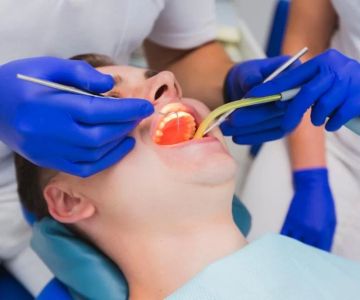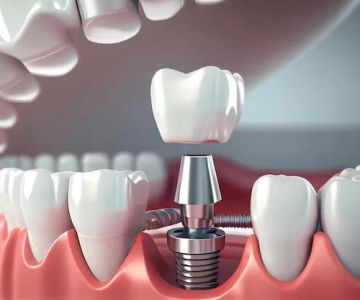Teeth Whitening Methods: Effective Ways to Brighten Your Smile
- 1. Understanding Teeth Whitening
- 2. Professional Teeth Whitening Treatments
- 3. At-Home Teeth Whitening Techniques
- 4. Natural Teeth Whitening Remedies
- 5. Choosing the Right Teeth Whitening Method
- 6. Tips for Maintaining Your Whitened Teeth
1. Understanding Teeth Whitening
Teeth whitening is a popular cosmetic dental procedure aimed at brightening your smile by removing stains and discoloration from your teeth. There are various methods available, from professional treatments performed by dentists to over-the-counter products and even natural home remedies. The key to successful teeth whitening lies in choosing the right method for your needs and understanding how each technique works.
Teeth can become discolored for a variety of reasons, including poor dental hygiene, certain foods and drinks like coffee or wine, smoking, and aging. Whitening treatments can help reverse these stains, giving you a brighter, more youthful smile.
2. Professional Teeth Whitening Treatments
Professional teeth whitening, also known as in-office whitening, is one of the most effective and fast-acting methods to achieve a noticeably brighter smile. This treatment is typically done by a dentist or dental professional, who uses stronger whitening agents compared to over-the-counter products. In-office treatments can be completed in as little as an hour and deliver dramatic results.
One of the most common professional whitening methods is the use of hydrogen peroxide or carbamide peroxide gels, which are applied to the teeth and activated with a special light. This method is highly effective for stubborn stains and can make your teeth several shades whiter in a single session.
Although professional teeth whitening is more expensive than at-home alternatives, it offers immediate results and is a safe option when performed by a licensed professional.
3. At-Home Teeth Whitening Techniques
If you're looking for a more budget-friendly option, at-home teeth whitening methods can be an effective solution. There are a variety of over-the-counter teeth whitening products available, including whitening toothpaste, strips, gels, and trays. These products usually contain lower concentrations of bleaching agents compared to professional treatments, meaning the results may take longer to show.
Some of the most popular at-home whitening products include:
- Whitening toothpaste: These toothpastes contain mild abrasives that help remove surface stains from your teeth.
- Whitening strips: These adhesive strips are coated with a bleaching agent and are applied directly to the teeth for a specified period.
- Whitening gels and trays: These products involve applying a gel to your teeth using a tray that molds to your mouth, allowing the gel to work over time.
While at-home methods are convenient and cost-effective, they may not be as powerful as professional treatments, especially for stubborn stains. However, with consistent use, they can still provide noticeable results over time.
4. Natural Teeth Whitening Remedies
If you prefer a more natural approach, several home remedies may help whiten your teeth without using chemical agents. While these methods may not produce the same dramatic results as professional treatments, they can help maintain your teeth's natural whiteness over time. Here are some popular natural teeth whitening remedies:
- Baking soda: Known for its gentle abrasive properties, baking soda can help scrub away surface stains when used in moderation.
- Activated charcoal: Some people use activated charcoal to whiten teeth by absorbing surface stains and toxins.
- Apple cider vinegar: A mild acid, apple cider vinegar can help remove stains when diluted with water.
While these remedies are natural, it’s important to use them cautiously as excessive use of abrasive substances like baking soda or charcoal can damage tooth enamel. Always consult with your dentist before trying any new whitening method.
5. Choosing the Right Teeth Whitening Method
Choosing the right teeth whitening method depends on your individual needs, budget, and how quickly you want to see results. If you have sensitive teeth or a history of dental issues, it’s a good idea to consult with your dentist before starting any whitening regimen.
Professional whitening is ideal for people looking for fast and significant results, especially if they have deep stains. On the other hand, at-home products can be more cost-effective and convenient but may take longer to show results. Natural remedies are the least invasive, but they may not provide the same level of whitening as other options.
6. Tips for Maintaining Your Whitened Teeth
After achieving a brighter smile, it’s important to take steps to maintain the results. Here are some tips for keeping your teeth white:
- Brush your teeth regularly with a fluoride toothpaste to remove surface stains.
- Avoid foods and drinks that cause staining, such as coffee, tea, and red wine.
- Use a straw when drinking beverages that could stain your teeth.
- Visit your dentist for regular cleanings to remove plaque buildup and maintain a healthy smile.
By incorporating these habits into your daily routine, you can keep your teeth looking bright and healthy for longer.







 Park Dental4.0 (45 review)
Park Dental4.0 (45 review) Comfort Dental Braces Austin Bluffs4.0 (463 review)
Comfort Dental Braces Austin Bluffs4.0 (463 review) Family Dentistry of Toms River: Dr. M. Shariff, DMD5.0 (22 review)
Family Dentistry of Toms River: Dr. M. Shariff, DMD5.0 (22 review) Monarch Dental & Orthodontics4.0 (557 review)
Monarch Dental & Orthodontics4.0 (557 review) Healthy Smiles Dental Care4.0 (40 review)
Healthy Smiles Dental Care4.0 (40 review) Manuel Stefan Dental Care: Stefan Manuel DDS5.0 (6 review)
Manuel Stefan Dental Care: Stefan Manuel DDS5.0 (6 review) The Importance of Oral Health Education During Pregnancy for a Healthy Pregnancy
The Importance of Oral Health Education During Pregnancy for a Healthy Pregnancy Best Tips for Brushing Your Teeth Properly for Healthy Gums: Essential Techniques for Oral Health
Best Tips for Brushing Your Teeth Properly for Healthy Gums: Essential Techniques for Oral Health Why Skipping Dental Checkups Can Lead to Bigger Oral Health Problems
Why Skipping Dental Checkups Can Lead to Bigger Oral Health Problems Advantages of Porcelain Dental Restorations
Advantages of Porcelain Dental Restorations How Can Diabetes Cause Tooth and Gum Problems? Preventing and Managing Oral Health Issues
How Can Diabetes Cause Tooth and Gum Problems? Preventing and Managing Oral Health Issues Healthy Habits for Promoting Good Oral Health and Hygiene: Tips for a Healthy Smile
Healthy Habits for Promoting Good Oral Health and Hygiene: Tips for a Healthy Smile